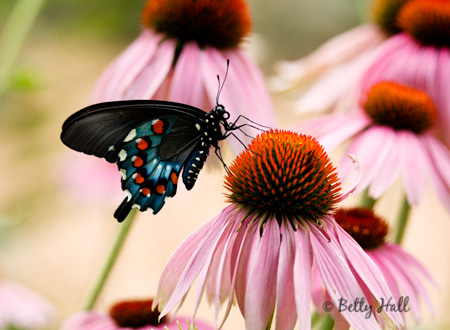I found butterfly eggs on my native pipevine (Aristolochia tomentosa) and brought them inside. I’ve enjoyed watching the caterpillars hatch, grow, and make chrysalises. This past weekend, six weeks later, the butterflies emerged and are now flying in and out of the backyard.
Beautiful pipevine swallowtail butterfly (Battus philenor) on native purple coneflowers (Echinacea purpurea) – what a delight!
Here’s a different view of the the same butterfly on native Lady Fern (Athrium felix-femina). In the right light the iridescent blue is breathtaking.










